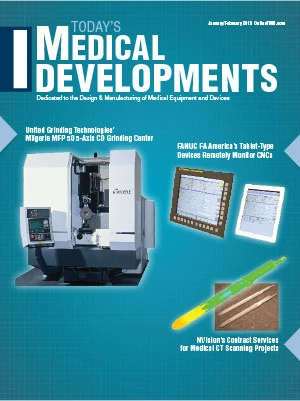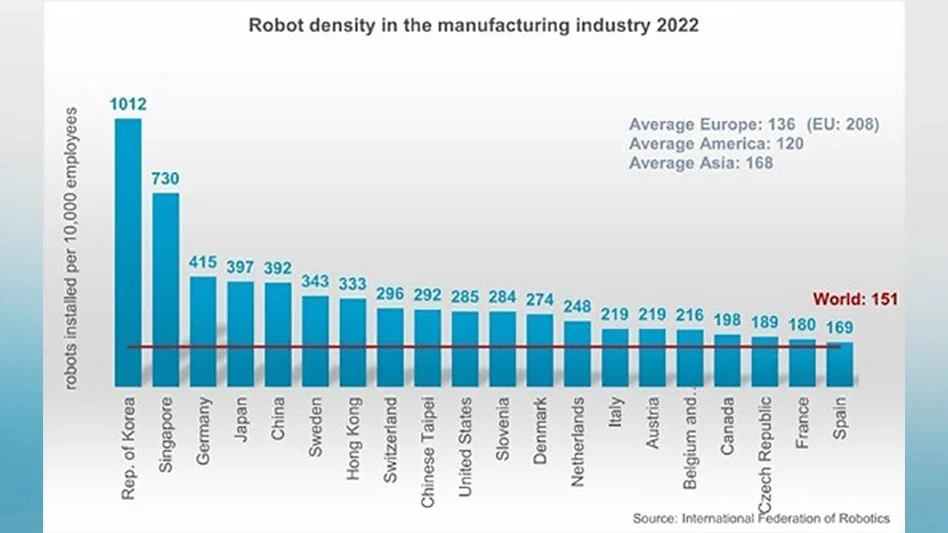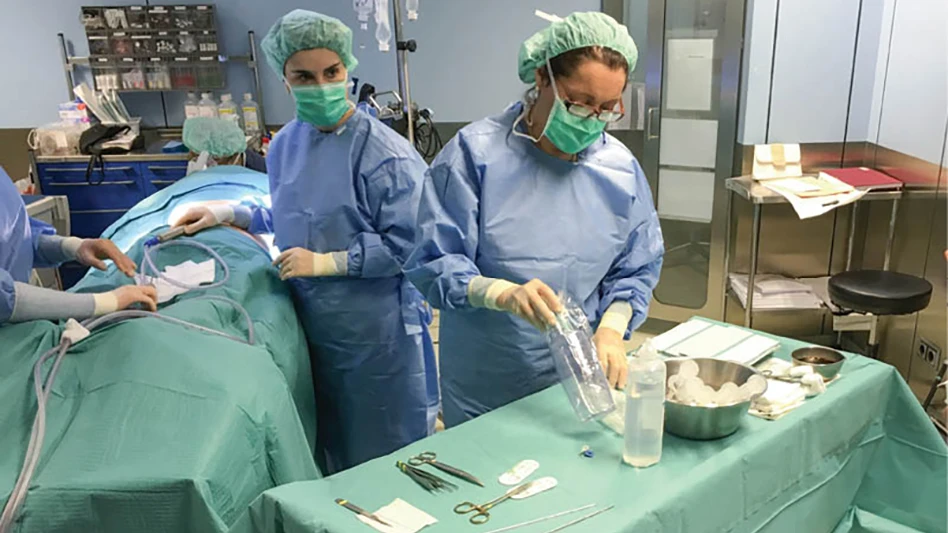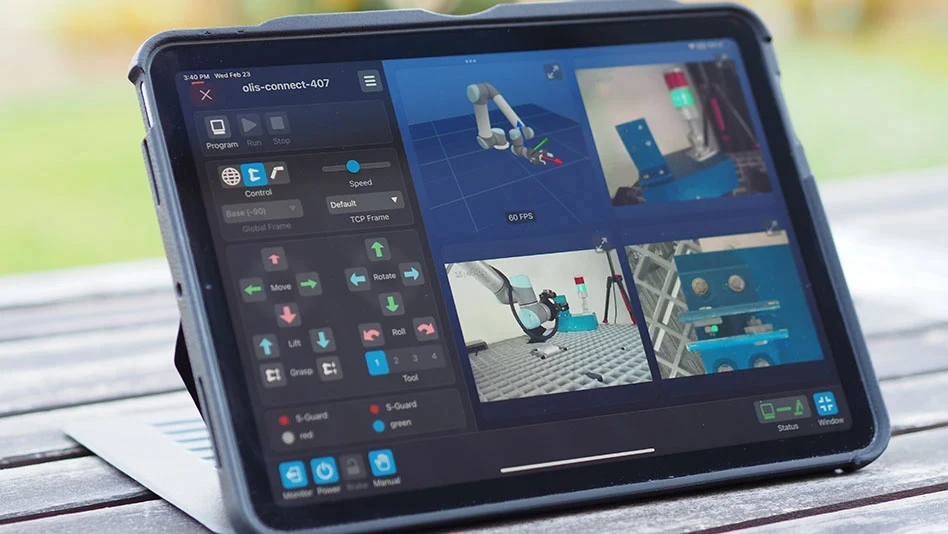.jpg) Warren Buffet, chairman and CEO, Berkshire Hathaway, often states that, “Investment in consumables is always among the safest investments anyone can make.”
Warren Buffet, chairman and CEO, Berkshire Hathaway, often states that, “Investment in consumables is always among the safest investments anyone can make.”
Recently, Buffett also touched on health care reform, stating that, “…health care reforms are a positive step, but more must be done to reduce costs… health care costs are hurting U.S. businesses because their competitors elsewhere do not pay as much for health insurance."
Whether or not you are a fan of Buffett, he carries the moniker as the Oracle of Omaha for his many years of investment and wealth-building prowess, and most people can see his logic, mainly because of the rate of replacement consumables has. In addition, since medical devices are consumables – as everything from diabetes test strips to daily medication requires repeated production by the manufacturer and purchase by the consumer – the medical market continues to be a strong industry. However, it is the health care reform medical device manufacturers face that will have the greatest impact moving forward – not Buffett’s comments on more needing done with health care or taxes.
U.S. Market
The United States is the third largest country in the world with a population of more than 300 million, while the medical device market in the United States, according to Espicom’s “Medical Equipment and Supplies Industry” report, is the world’s largest. Estimated at $105.8 billion in 2011, per capita expenditure, at $339, is the third highest in the world.
Figures from Frost & Sullivan’s “2012 United States Medical Devices Outlook” offer a similar positive take on market conditions, finding total market revenues for the medical device market in 2011 near $102.1 billion. The report authors also note that their forecast is for the market revenue to be $156.8 billion by 2018 – reflecting an overall compound annual growth rate (CAGR) of 6.3%.
Looking just at the implantable medical device market, with a regional take of the United States, analysts at Freedonia Group see the U.S. demand for implantable medical devices forecast to increase 7.7% annually to $52 billion by 2015.

Global Market
Moving beyond just a look at the United States, analysts for Espicom’s “World Medical Market Forecasts 2017” report that, per their definition of the global market for medical equipment supplies, the market is valued at $307.7 billion in 2012, equal to just less than $50 per capita. Analysts note the economic downturn in 2008 and 2009, but are quick to state that much of the world has seen a swift return to growth in 2010 and 2011, with the major exception being the Eurozone. With this return to growth, further projections are for the total market to rise to $434.4 billion by 2017, equal to just under $67 per capita and a CAGR for the 2012-2017 period of 7.1%. Stated, as some of the best prospects for growth, are the developing markets of Asia, Latin America, and Central/Eastern Europe, while traditional Western markets will represent more steady performers.
As Espicom analysts note that the worldwide medical industry has felt some effects from economic crises during the past few years, demand remains strong and will continue to be so, due in large part to changing demographics – such as aging global population and increased life expectancy. Therefore, analysts see the demand for medical equipment and services set to increase more. Contributing to this increase in the market is the anticipated 146% rise in the elderly portion of the U.S. population to 86 million by 2050, along with technological innovations, rising cases of chronic disease, and a combination of increases in medical tourism and advertising products directly to potential patients/consumers.
Changes/Impacts
While industry analysts continue to predict growth in the United States and globally, there is industry concern over additional parameters the enactment of the Affordable Care Act (ACA) implements on medical device makers. Medical manufacturers, industry associations, elected officials, and lobbyists remain firm with regard to their opposition to the ACA.
“The Economic Impact of the U.S. Advanced Medical Technology Industry,” prepared by Battelle Technology Partnership Practice for the Advanced Medical Technology Association (AdvaMed), details this sector. The report notes that the U.S. advanced medical technology industry is an R&D-driven, manufacturing sector that is important to the U.S. economy not only for the economic benefits it generates, but also for the health care benefits provided by the application of its products. Utilizing input/output (I/O) analysis, Battelle quantified the total impact of the industry generated in the economy. The results of the analysis show that the advanced medical technology industry is responsible for generating:
- Almost 1.9 million U.S. jobs
- More than $113 billion in personal income for U.S. workers
- $191 billion in value-added activity
- $381 billion in economic output
Battelle’s report goes on to explain that, “as a result of the increasing national demand for new devices to assist in prevention, diagnosis, and treatment of medical conditions, coupled with an increase in global demand, it is anticipated that the advanced medical technology industry will continue to grow in importance to the U.S. economy. However, sustaining a U.S. operating environment conducive to the growth and ongoing operations of the advanced medical technology industry carries significant economic benefits.”

The report highlights that every $1 billion in advanced medical technology industry revenue in the U.S. generates an additional $1.69 billion in national economic output, almost 13,000 jobs, and $778 million in personal income. Likewise, however, any policies or changes that negatively affect the operating environment or otherwise reduce industry output will have the inverse effect – driving significant employment reductions, income reductions, and reducing business.
The position of AdvaMed officials is that, the 2.3% ACA medical device tax will harm U.S. global competitiveness and stunt medical innovation. Supporting this position are figures offered by Stephen J. Ubl, president and CEO, AdvaMed, following release by the IRS of the final implementation regulations for the medical device tax, noting the tax harms economic growth in one of the only American manufacturing sectors that is a net exporter, as the industry exports $5.4 billion more than it imports. Additionally, this excise tax adds another 29% per year in taxes to the amount the medical device industry already pays in federal income tax.
Another industry association, the Medical Device Manufacturers Association (MDMA), maintains its anti-medical device tax stance, with the position that the overwhelming majority of innovation from the medical device industry comes from smaller manufacturers who work closely with clinicians and engineers, developing the therapies and treatment of tomorrow. If not repealed, the tax will stifle innovation, harm patient care, and weaken the position of the United States as the global leader in medical device innovation.
MDMA officials cite that the medical device industry comprises some 409,000 direct jobs and close to 2 million indirect jobs, with 80% of these companies having fewer than 50 employees and only 10% having 500 employees or more. However, this is where the industry and the tax meet at crossroads. As of press time it has pretty much been determined that even with all the opposition to the medical device tax – and large corporations already laying off staff – the tax is here to stay. Yet, all forecasts continue to show the medical device industry is strong with continued growth in the future. Therefore, perhaps it will be the manner in which the manufacturing sector forecast plays into this that will determine which road the country takes.
Manufacturing Outlook
GE Capital’s “Sixth Bi-Annual U.S. Mid-Market CFO Survey,” conducted in Fall 2012, shows growth and positive outlooks. A significant key finding is that, when it comes to spending, 47% are considering investing more in equipment this year, followed by 35% who plan to spend more to achieve organic growth. Regarding growth expectations, 43% of general manufacturing CFO’s expect moderate growth in the next one to three years while healthcare sees the greatest decrease in the likelihood to downsize, going from 27% in Q1 2012’s survey to 14% in the current survey.
Looking at profitability, general manufacturing (39%) is the most optimistic about expectations for profit increases while general manufacturing, at 64%, led all industries in their expectations for revenue growth.
The results support a trend in manufacturing’s stability or growth is PwC’s “Manufacturing Barometer: Business Outlook Report October 2012,” that shows more industrial manufacturing panelists surveyed are planning net new hiring during the next 12 months, which is up 5 points to 47%. Furthering this growth, 49% of U.S. industrial products manufacturers surveyed plan major new investments of capital during the next 12 months, which, although slightly below last quarter and a year ago results (55%), their mean investment as a percentage of total sales is 5.8% above last quarter, similar to a year ago.
Even as we start 2013 with more positive than negative outlooks, reports from Deloitte LLP, in the “Manufacturing Opportunity: A Deloitte Series on Making America Stronger,” highlight the nation’s concern that not enough is being done to support and foster manufacturing in the United States. Noted in the report is that in the past decade, America has lost 6 million manufacturing jobs, yet today, 600,000 jobs cannot be filled in America because manufacturers cannot find people with the right skills. However, when asking Americans how they would create a thousand new jobs in their communities with a new business facility, manufacturing is their first choice. Yet, 18- to 24-year-olds rank manufacturing dead last among industries that they would actually choose to start a career.
Looking at those responses, perhaps this will determine the road the country must take, which starts with educating the young and building their interest in manufacturing. However, this will not happen without collaboration. Companies need to step up to the plate and offer apprenticeship programs – which will go a long way to fill the gap of jobs available and those capable of filling the jobs. Government too must answer the need by supporting manufacturing’s growth in a stronger manner in order to keep jobs at home, while advanced medical technology companies need to operate in an environment that encourages R&D investment as well as facilitates profitable operations. In addition, the banking industry must work with small businesses to enable them to grow at the pace they require in order to answer the demands of their customers.
Finally, medical device manufacturers need to remember where their roots are. As innovation is of great importance to economic growth, even as the new device tax goes into effect, look at those around that helped get the business to where it is today and remember the history the United States has for delivering innovation and advancements across a range of industries.
Taking these steps to keep the innovation alive – minimizing any changes that negatively affect the operating environments – will move our country down the right path.
Industry Forecast: Medical Devices
By Evangeline Loh, Phd, RAC, Vice President of Regulatory Affairs and Stewart Eisenhart, Regulatory Editor, Emergo Group
Medical device manufacturers and their service providers face a number of significant challenges and opportunities in 2013 – depending on which markets are important to them. Major changes in many of the world’s largest medical device markets will occur this year, requiring manufacturers to prepare for new compliance issues while at the same time dealing with a still shaky global economic climate.
Regional Economic Issues
First, we should consider the broader economic context within which the medical device industry will operate in 2013. In the United States, signs of a slow but steady economic recovery will likely continue next year, likely indicating at least a stable if not growing medical device market there.
 The European Union’s economic slump, however, persists as policymakers continue pushing austerity measures. However, some EU member state economies such as Germany’s will likely remain relatively healthy – meaning perhaps more opportunities for medical device companies. Economies in countries such as Greece and Spain will in all probability continue to struggle in 2013, but Emergo Group has noted continued interest by medical device manufacturers in registering their products for sale in these markets, as well.
The European Union’s economic slump, however, persists as policymakers continue pushing austerity measures. However, some EU member state economies such as Germany’s will likely remain relatively healthy – meaning perhaps more opportunities for medical device companies. Economies in countries such as Greece and Spain will in all probability continue to struggle in 2013, but Emergo Group has noted continued interest by medical device manufacturers in registering their products for sale in these markets, as well.
Many emerging economies in South America and Asia, on the other hand, continue to show robust growth and attract medical device manufacturers seeking business development opportunities beyond established top-tier markets. Accordingly, medical device markets in China, Brazil, India, and Mexico will warrant significant interest in 2013.
United States
Considering the medical device market in the United States this year, the most significant short-term issue facing manufacturers is implementation of the excise tax on most medical devices sold in the country. The device tax, which went into effect in January 2013, is part of broader healthcare reform legislation passed by U.S. lawmakers in 2010, and will apply to 2.3% of manufacturers’ or importers’ gross sales. The tax has elicited strong opposition from medical device industry trade groups and their Congressional allies, but to no avail. Opponents of the excise tax have argued that the added cost will drive many device makers to cut back on jobs and stifle innovation; some larger medical device companies have already announced layoffs ahead of the tax’s implementation, and U.S. industry trade group AdvaMed claims that more than 43,000 medical technology jobs will be at risk because of the tax. The degree to which companies may resort to layoffs remains an open question, however. Emergo Group surveyed senior executives at about 200 mostly small- and mid-sized medical device companies in early 2012 about their plans to deal with the U.S. excise tax, and more than half of respondents (53%) said they would pass on added costs from the tax to their customers. Only 17% of executives indicated plans to cut staff due to the tax in 2013.
Europe
As medical device firms grapple with the pending excise tax in the United States, they face more substantive regulatory changes in Europe – but potentially not until 2017. Still, preparatory work to ensure compliance with new EU regulations should begin next year.
Among the proposed regulatory changes for the EU medical device market:
- Expanded requirements for Notified Bodies (scrutiny on manufacturers)
- Greater utilization among EU member states of the European medical device database (Eudamed) and Unique Device Identification methodologies
- Codification of several European Commission and Global Harmonization Task Force guidances – making these mandatory
- Qualified Person requirements for medical device manufacturers and their Authorized Representatives
Again, implementation of new EU regulations is not likely until 2017 at the earliest. However, EU authorities have already begun moving toward this new regulatory approach – indeed, implementation of reforms to exert greater regulatory control over Notified Bodies will likely go into effect in 2013. Among other things, EU member states will require Notified Bodies to sample and test their clients’ medical devices according to specifications as well as perform unannounced audits. As such, manufacturers had best get ready to help their Notified Bodies meet these new requirements.
Asia
If medical device regulatory requirements become more complicated in the US and Europe going forward, they will become more streamlined and efficient among Southeast Asian markets.
The Association of Southeast Asian Nations (ASEAN), a 10-nation economic group, has begun developing a harmonized medical device regulatory framework that would cover markets in Brunei, Cambodia, Indonesia, Laos, Malaysia, Myanmar, the Philippines, Singapore, Thailand, and Vietnam.
ASEAN directors have set a late 2014 deadline for implementation of the new system, known as the ASEAN Medical Devices Directive or AMDD, among all member states. Nevertheless, some member countries such as Singapore and Malaysia have already done much of the work to establish their AMDD-compliant frameworks, which should boost foreign manufacturers’ interest in Southeast Asian medical device markets in 2013.
The AMDD will consist of a four-tier device classification model, a Common Submission Dossier Template and compliance checks via Conformity Assessments, all based heavily on GHTF principles as well as the European Union’s Medical Device Directives.
It should be emphasized that device registration will still be required in each ASEAN member state, but the process should be harmonized for all 10-member countries. A more efficient commercialization pathway for a combined market of 600 million people should provide a major incentive for manufacturers on the hunt for new business opportunities.
Global Themes
Expect regulatory authorities to become increasingly interested in post-market surveillance in 2013 – particularly the concept that manufacturers must actively collect and analyze data on their medical devices once registration has been obtained. In addition, tracking devices on the market and the economic operators involved in the process will also garner more regulatory attention, and authorities have begun to require this information. This will all provide more information about devices, and prove a benefit to patients.
Emergo by UL
https://www.emergobyul.com/

Explore the January February 2013 Issue
Check out more from this issue and find your next story to read.
Latest from Today's Medical Developments
- Best of 2024: #6 Article – Closing the global product information gap
- Best of 2024: #6 News – NUBURU enters medical device market with order Blueacre Technology
- Season's greetings
- Best of 2024: #7 Article – Synchronized machining processes for medtech
- Best of 2024: #7 News – 3D printing could revolutionize treatment for cataracts, other eye conditions
- Best of 2024: #8 Article – Perfecting the CMP process for surgical blades
- Best of 2024: #8 News – Johnson & Johnson to acquire Shockwave Medical
- Best of 2024: #9 Article – Strategy Milling combines old and new for precision dental restorations





